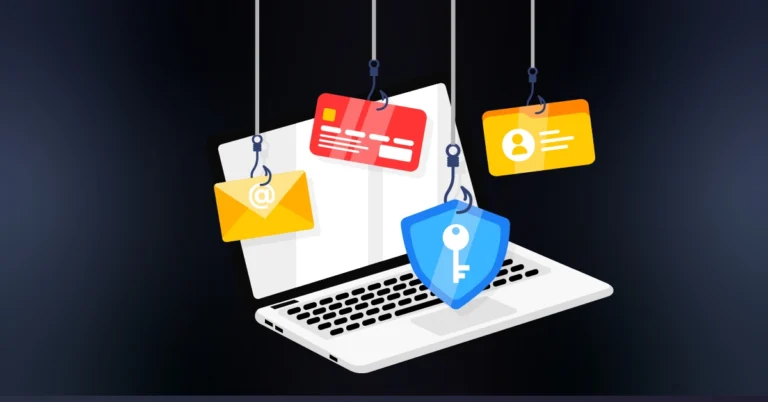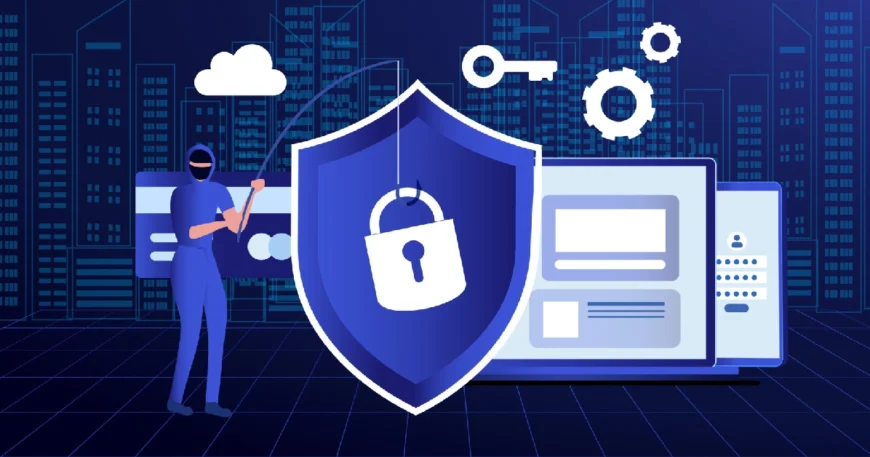Technological advancements and the growth of internet usage have brought numerous benefits, such as easier access to information and enhanced connectivity. However, these developments also increase exposure to cybersecurity threats. Among these threats, cyberattacks aim to steal identities, financial assets, or illegally take control of personal accounts. Phishing, one of the most common forms of such cybercrime, has grown significantly: Over 255 million phishing attacks were reported, marking a 61% rise compared to the previous year.
Given the rising frequency and potential damage of these attacks, it is essential for individuals and organizations to understand how phishing works, how to respond if targeted, and how to prevent such attacks.
What is Phishing?
Phishing is a type of cyber scam in which attackers use emails, text messages, or phone calls to trick targets into revealing sensitive information such as login credentials, personal details, or financial data. Once obtained, these details are often used to commit fraud, gain unauthorized access to accounts, or carry out other malicious activities.
According to the National Institute of Standards and Technology, phishing is defined as “an attempt by criminals to trick you into sharing information or taking an action that gives them access to your accounts, your computer, or even your network.”
Phishers frequently impersonate well-known brands or trusted individuals to make their attacks seem legitimate. Commonly spoofed companies include Yahoo, DHL, Microsoft, Google, Facebook, Adobe, and Netflix. Attackers may also pretend to be friends or acquaintances. Victims are often directed to fake websites where they are asked to provide sensitive data, such as login credentials, credit card information, birth dates, or Social Security numbers. If the victim uses the same passwords across multiple accounts, the consequences of a successful attack can be far-reaching.
Common Types of Phishing Attacks
Phishing attacks can take many forms, each designed to trick victims into revealing sensitive information or downloading malicious content. Understanding the different types can help you recognize and avoid these scams.
- Email Phishing: Fake emails from companies or contacts asking for sensitive information.
- SMS Phishing (Smishing): Fraudulent text messages with malicious links.
- Voice Phishing (Vishing): Scammers call and pose as trusted representatives.
- Spear Phishing: Targeted attacks using personal information to increase credibility.
- Clone Phishing: Replicating legitimate emails but replacing links or attachments with malicious ones.
Spotting Phishing Scams Before They Harm You
Scammers use emails, text messages, or phone calls to trick people into sharing sensitive information, which can lead to financial loss, identity theft, or unauthorised account access. At StrongBox IT, we help you understand these threats by recognising the tactics phishers commonly use — the first step in protecting yourself.
Phishing messages often create a sense of urgency or concern. They might claim that:
- There have been suspicious login attempts on your account.
- There is an issue with your account’s billing or payment information.
- Personal or financial details need to be verified.
- A payment must be made by clicking a provided link.
- You are eligible for a refund or reward if you fill out your details through a link.
Other warning signs include:
- The message appears to come from a legitimate company, such as Amazon or Apple.
- Official logos or branding are used to make the message look authentic.
- The company name is included in the email address, but the format is unusual or non-official.
- The sender cannot or will not verify their legitimacy when questioned.
By staying alert to these signs and following StrongBox IT’s guidance, you can identify phishing attempts early and avoid falling victim to them.

What to Do After a Phishing Attack
If you realize you’ve fallen victim to a phishing attempt, taking immediate action can minimize potential damage and protect your accounts and personal information. Follow these steps:
Immediately cease any communication with the suspicious email, message, or website. Avoid clicking on further links or providing additional information to prevent further compromise.
Update the passwords on all affected accounts and any other accounts that use the same credentials. Use strong, unique passwords to prevent attackers from accessing other accounts.
Activate 2FA wherever possible. This extra layer of security ensures that even if your password is compromised, attackers cannot easily access your accounts.
Run a full system scan using trusted antivirus or anti-malware software to detect and remove any malicious files or software that may have been installed.
At StrongBox IT, we emphasize reporting phishing attacks to your bank, email provider, or local cybersecurity authorities. Reporting helps prevent further misuse and protects others from similar attacks.
8 Tips for Phishing Attack Prevention
Even though phishing attacks are increasingly common, there are several practical steps you can take to protect yourself. Incorporating these eight measures into your device and online security routine can help keep phishers at bay:
- Understand how phishing scams work and learn to recognize suspicious messages that request personal information or create a sense of urgency.
- Delete or ignore emails, texts, or messages that appear suspicious, as interacting with them may increase the risk of compromise.
- Check with StrongBox IT’s guidance to verify sender email addresses or phone numbers carefully and ensure authenticity.
- Avoid clicking on links or downloading files from unverified messages, as these may lead to fake websites or install malware on your device.
- Report phishing attempts to your email provider, bank, or relevant authorities to help protect others and allow organizations to strengthen security measures.
- Use updated antivirus or anti-phishing software to detect and block threats in real time.
- Enable multi-factor authentication to add an extra layer of security, making it more difficult for attackers to access your accounts even if they have your credentials.
- Regularly back up important files to external drives or cloud storage so that your data remains safe and accessible, even if your device is compromised.
Conclusion
Falling victim to phishing can be alarming, but quick action can significantly reduce damage. By securing your accounts, scanning devices, and reporting the attack, you can protect your personal and financial information. Staying informed and vigilant is the key to preventing future attacks.
For advanced protection, use StrongBox IT’s cybersecurity solutions to safeguard your data.





